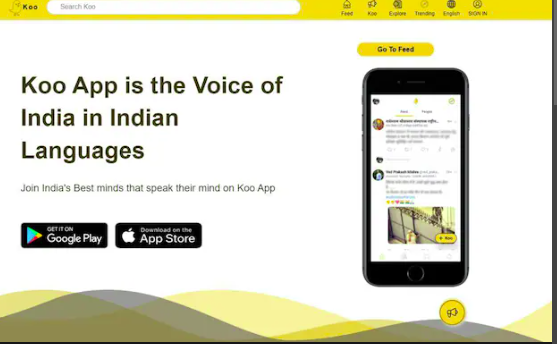Twitter has undoubtedly become a global phenomenon, connecting people from various walks of life. However, for Desi Tweeters, the Indian microblogging scene offers a unique and vibrant space to express opinions, share thoughts, and engage in meaningful conversations. In this blog post, I’ll be your guide as we navigate the diverse world of Twitter alternatives tailored for the Indian audience.
Understanding the Need for Alternatives
While Twitter has its merits, many Indian users are seeking alternatives that cater specifically to their cultural context, interests, and preferences. Whether it’s a desire for more localized content or a sense of community, these alternatives aim to provide a distinct microblogging experience.
Mastodon: The Decentralized Hub
One notable alternative gaining traction is Mastodon. Unlike centralized platforms, Mastodon operates on a decentralized model, allowing users to join different “instances” based on their interests. This decentralized nature fosters diverse communities and ensures more control over content moderation.
Navigating Mastodon is like exploring a myriad of interconnected communities, each with its own unique flavor. From tech enthusiasts to foodies, there’s an instance for everyone. The decentralized approach also addresses concerns about data privacy, making it an appealing option for those cautious about online security.
Koo: India’s Voice
In the quest for a microblogging platform that resonates with the Indian ethos, Koo emerges as a frontrunner. Launched with the vision of providing a platform for Indians to express themselves in their native languages, Koo has gained popularity for its simplicity and focus on regional diversity.
Expressing thoughts in languages like Hindi, Tamil, Bengali, and more, Koo empowers users to connect with a broader audience that shares a linguistic bond. The platform’s straightforward interface makes it accessible for users of all ages, contributing to its rapid growth in the Indian microblogging space.
ShareChat: Beyond Text
While traditional microblogging platforms primarily focus on text-based content, ShareChat takes a different approach by incorporating multimedia elements. Aimed at catering to the diverse linguistic landscape of India, ShareChat allows users to share not only text but also images, videos, and even audio snippets.
This multimedia-centric platform encourages users to express themselves in creative ways, fostering a dynamic and visually engaging environment. ShareChat’s user-friendly features make it a compelling choice for those who prefer a mix of text and multimedia content in their microblogging experience.
Chingari: Short Videos, Big Impact
In the era of short-form content, Chingari emerges as an exciting microblogging platform centered around short videos. Drawing inspiration from the trend of bite-sized content, Chingari allows users to share quick snippets, express opinions, and showcase talents through video.
Chingari’s interface is designed to encourage seamless content creation and consumption, making it a go-to platform for users who prefer expressing themselves through visuals rather than text. The platform’s popularity skyrocketed with the rise of short video formats, providing a distinct space for creative expression.
Local Circles: Connecting Communities
For those seeking microblogging with a community-centric approach, Local Circles offers a unique solution. This platform focuses on connecting people based on their locality and interests, creating micro-communities within the larger network.
Local Circles thrives on the idea of hyper-local engagement, allowing users to discuss neighborhood issues, share local news, and connect with like-minded individuals nearby. This localized approach sets it apart from broader platforms, making it an ideal choice for users who value community connections.
Conclusion: Diversifying Your Microblogging Experience
As we wrap up our exploration of Twitter alternatives tailored for Desi Tweeters, it’s evident that the Indian microblogging scene is brimming with diversity. Whether you’re drawn to the decentralized nature of Mastodon, the linguistic richness of Koo, the multimedia experience on ShareChat, the visual appeal of Chingari, or the community focus of Local Circles, there’s a platform suited to every taste.
These alternatives offer more than just a break from the mainstream; they provide a chance to engage with content that aligns with your cultural identity and interests. So, as you embark on your microblogging journey in the Indian digital landscape, consider these alternatives to make your experience truly personalized and enriching. Happy microblogging!
